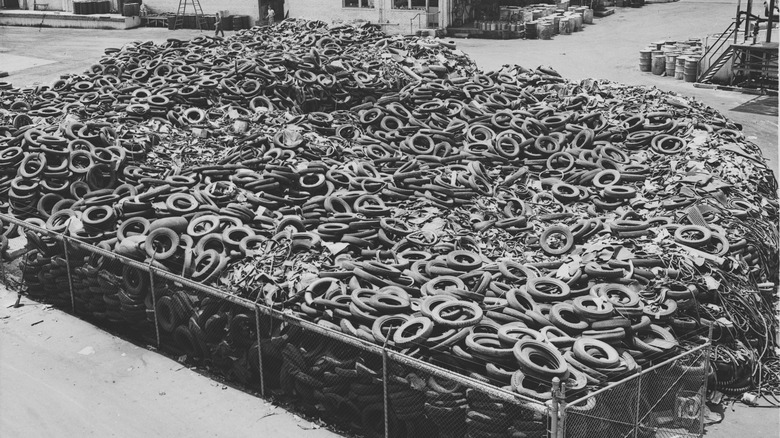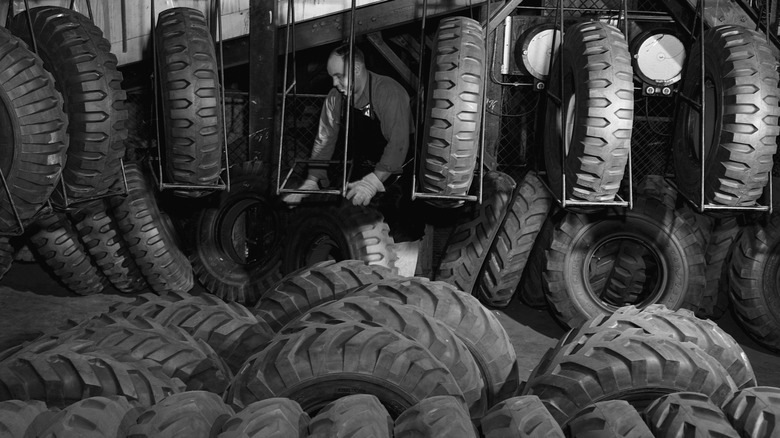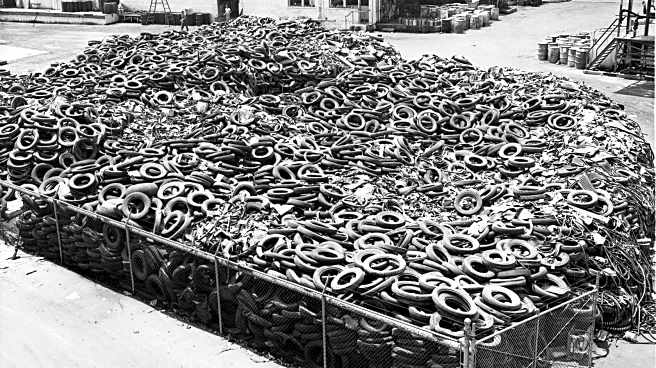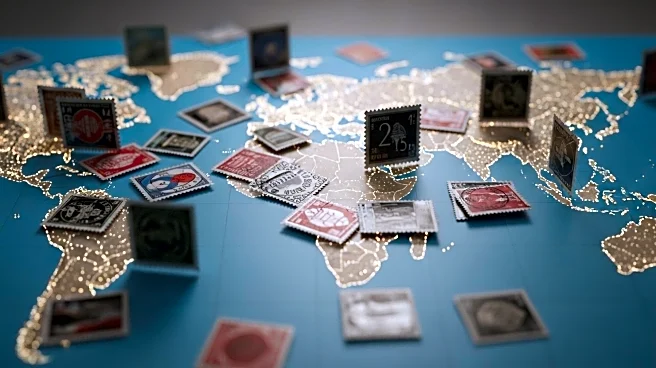
World War II was a tumultuous moment in history that changed many aspects of life today. One of its more peculiar ramifications is how it changed the way we make rubber tires. This transformation all began because there was a shortage of natural rubber in the United States during the war, forcing the top nation's top engineering minds to find a viable alternative. This push for innovation would lead to one of the biggest changes made to car tires in the last 100 years.
The shortage was a sudden and
unexpected result of Japan's 1942 invasion of Singapore. The Japanese occupation gave them control of 90% of the U.S. supply of natural rubber, leading people to organize massive rubber drives to try and combat the shortage. There was a real concern that the U.S. wouldn't have the rubber it needed to equip military vehicles, as well as gas masks, boots, and even medical equipment. Meanwhile, the government worked with rubber companies and other key industries to start producing a new synthetic rubber called Government Rubber-Styrene, or GRS.
By 1945, the U.S. was producing about 70,000 tons of synthetic rubber a month, which the automobile tire industry started to use in its products as well. Today, 70% of the country's rubber is this type of GRS or one of its evolutions. When you consider that the U.S. shipped 257.6 million tires for passenger vehicles in 2022 alone, that means this synthetic rubber is produced on a massive scale.
Read more: 6 Ways To Use Your Car's Tow Hitch (Besides Towing)
The Synthetic Rubber Industry Actually Started Before World War I

Before the U.S., Germany was actually the first country to develop a synthetic alternative to rubber way back before World War I. Fritz Hoffman, a chemist working for the Bayer company, did some experimenting and realized he could create synthetic rubber by stringing together different isoprene molecules. In 1909, he patented the first synthetic rubber, methyl-isoprene, using this technique.
Scientists kept tinkering with this formula to create cheaper and better substitutes. In 1929, another German company called IG Farben came up with Buna S, a synthetic rubber that was comparable in price with its natural counterpart. Buna S, also known as styrene-butadiene rubber in England, was so successful that IG Farben created the first synthetic rubber factory in the world in 1937 to produce it on a larger scale. In 1930, IG Farben struck a deal with an American company called Standard Oil of New Jersey, which was once part of the largest oil company in the world. The U.S. company received the patents for Buna S and started producing it in its own factories, laying the foundation for the United States' future synthetic rubber innovation in World War II.
Starting around 1955, private industry started to handle the manufacturing of rubber in the U.S. Synthetic rubber became the new norm with more than 200 different kinds in circulation at this point. These World War II innovations changed the way car tires are made, with about 60% of all rubber used by major tire brands on the roads today made of synthetic materials.
Want the latest in tech and auto trends? Subscribe to our free newsletter for the latest headlines, expert guides, and how-to tips, one email at a time.
Read the original article on SlashGear.















